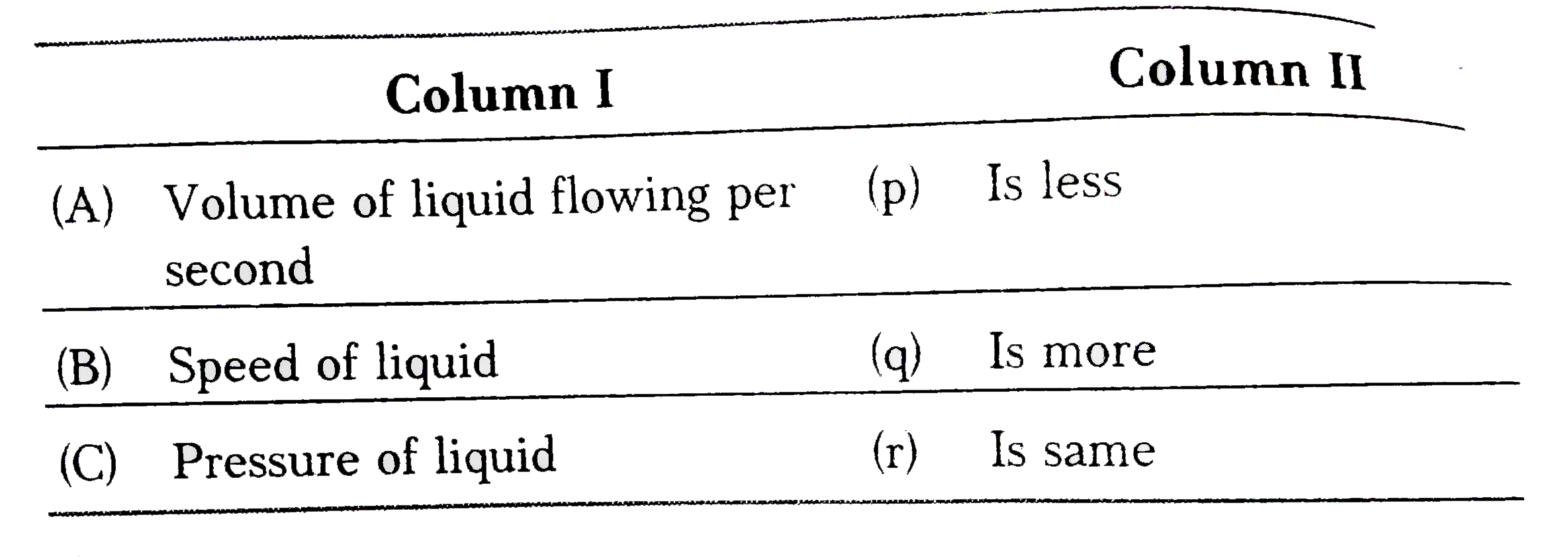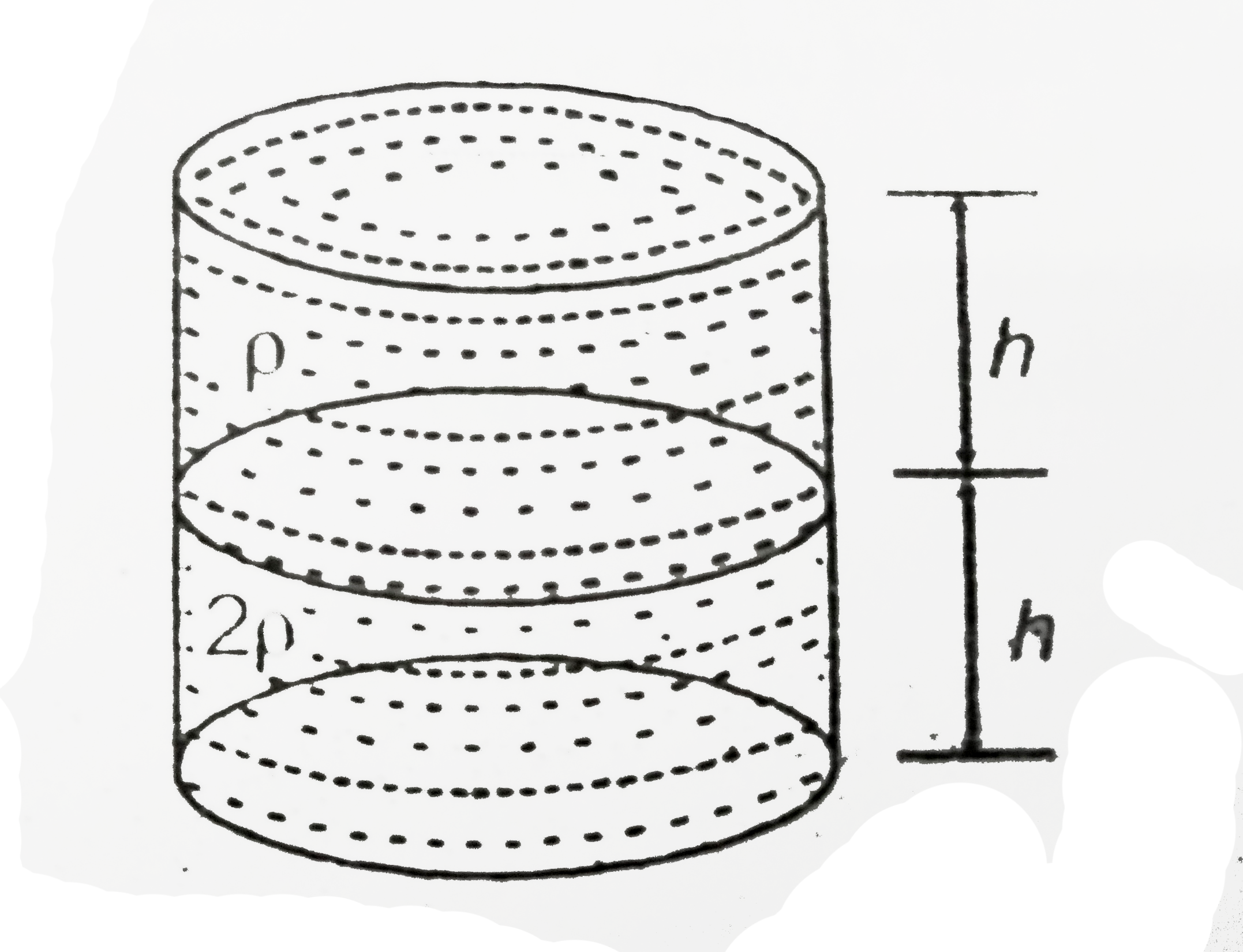A large open top container of negligible mass and uniform cross sectional area A a has a small hole of cross sectional area A/100 in its side wall near the bottom. The container is kept on a smooth horizontal floor and contains a liquid of density ρ and mass M0. Assuming that the liquid starts flowing out horizontally through the hole at t=0, calculate a the acceleration of the container and b its velocity when 75% of the liquid has drained out.
The correct Answer is:[(i) 0.2m/sec2, (ii) 10√(2m0Aρg)]
Step by step video, text & image solution for A large open top container of negligible mass and uniform cross sectional area A a has a small hole of cross sectional area A//100 in its side wall near the bottom. The container is kept on a smooth horizontal floor and contains a liquid of density rho and mass M_(0). Assuming that the liquid starts flowing out horizontally through the hole at t=0, calculate a the acceleration of the container and b its velocity when 75% of the liquid has drained out. by Physics experts to help you in doubts & scoring excellent marks in Class 11 exams.
Updated on:21/07/2023Topper's Solved these Questions
Similar Questions
A large open top container of negligible mass and uniform cross-sectional area A has a small hole of croos-sectional area A100 in its side wall near the bottom.The container is kept on a smooth horizontal floor and contains a liquid of density ρ and mass m0. Assuming that the liquid starts flowing out horizontally through the hole at t=0, The acceleration of the container is x10m/s2 than x is -
View SolutionA large container contains a liquid of density p, mass m, and placed on a smooth horizontal floor. The mass of container is negligible and cross sectional area is A. Now at the bottom of the container, there is small hole of cross section area A/200 in the side wall through which the liquid starts flowing horizontally at t=0. What will be the velocity of efflux when half of the liquid is drained out. Also, find the acceleration of the liquid flowing out.
View Solution
Knowledge Check
A large open top container of negligible mass and uniform ross sectional area A has a small uniform cross sectional area a in its side wall near the bottom. The container is kept over a smooth horizontal floor and contains a liquid of density ρ and mass m0. Assuming that the liqudi starts flowing through the hole A the acceleration of the container will be
A2agABagAC2AgaDAgaA large container (with open top) of negligible mass and uniform cross-sectional area A has a small hole of cross-sectional area a in its side wall near the bottom. The container contains a liquid of density ρ and mass m. If the liquid starts flowing out of the hole at time t = 0, the velocity of efflux of the liquid when 75% of the liquid has drained out is:
A√3mg4AρB√2mgAρC2√mgAρD√mg2AρThere are two holes, each of cross-sectional area a, on the oppisite side of a wide rectangular tank containing a liquid of density ρ. When the liquid flows out of the holes the net force on the tank is [h is the vertical distance between the two holes].
A2αρghB4αρghC0.5αρghDαρgh
A cylindrical massless container of cross sectional area A have a fluid filled up to height h and have a small orifice of area a in wall near its bottom. Find minimum coefficient between container and ground so that container does not move
View SolutionA vessel of 100cm2 cross sectional area contains water. The mass of water is 2 kg. Find the pressure acting on the bottom surface.
View SolutionA liquid is flowing through a pipe of non-uniform cross-section. At a point where area of cross-section of the pipe is less, match the following columns.

View SolutionA fixed container of height H with large cross-sectional area A is completely filled with water. Two small orifice of cross-sectional area a are made, one at the bottom and the other on the vertical side of the container at a distance H/2 from the top of the container find the time taken by the water level to reach a height of H/2 from the bottom of the container.
View SolutionA container of cross-section area A resting on a horizontal surface, holds two immiscible and incompressible liquid of densities ρand2ρ as shown in figure. The lower density liquid is open to the atmosphere having pressure P0. The pressure at the bottom of the container is

View Solution

